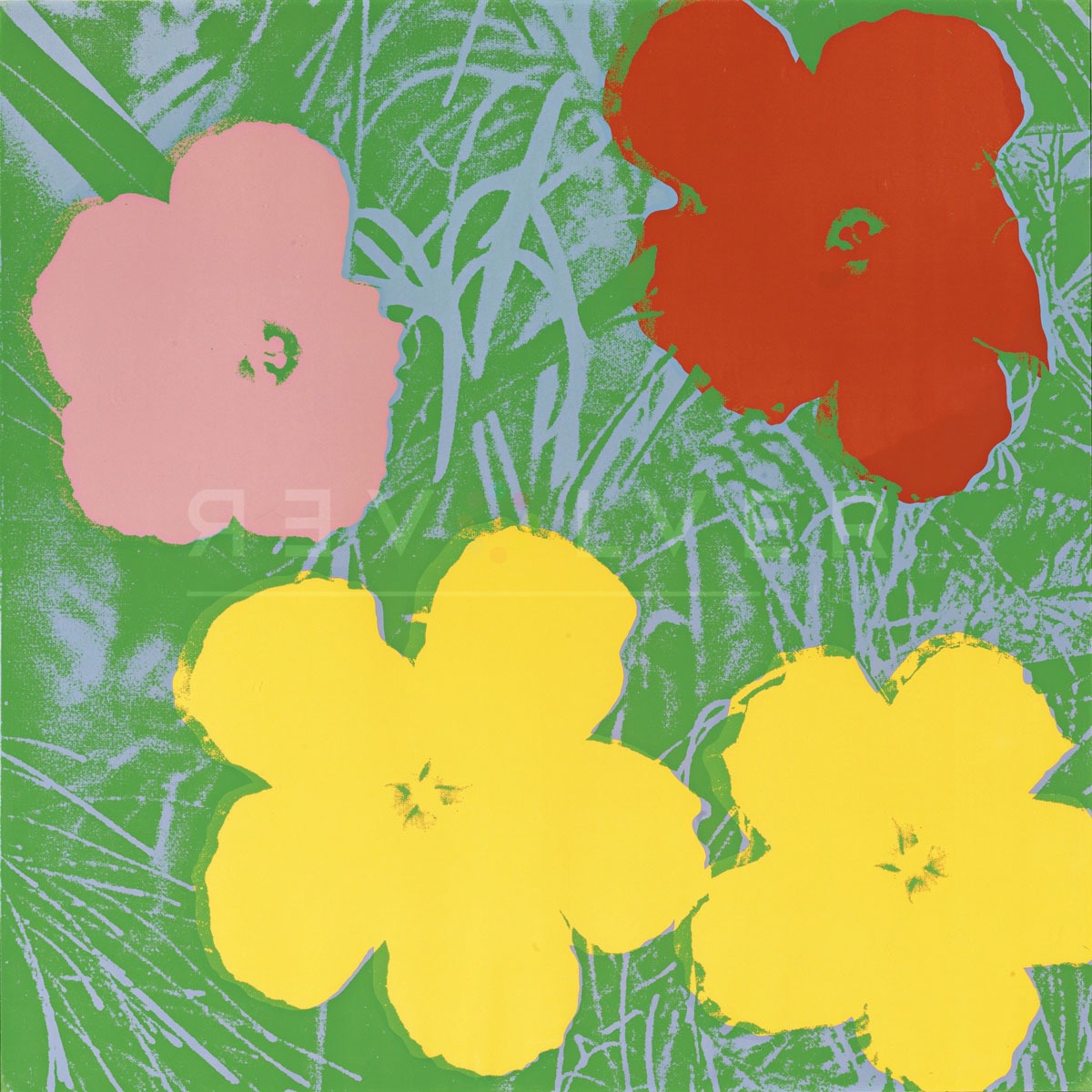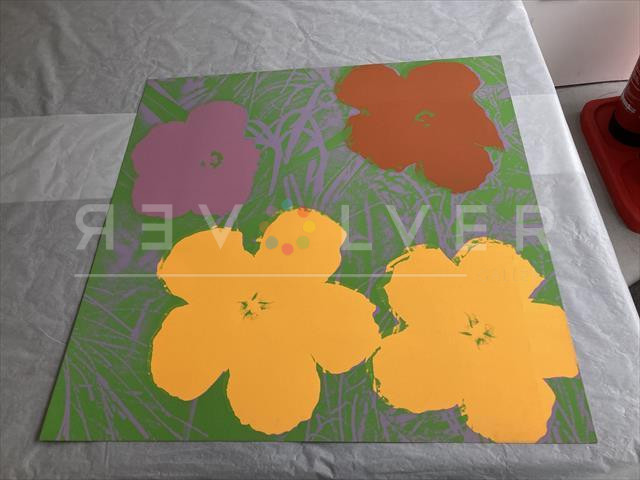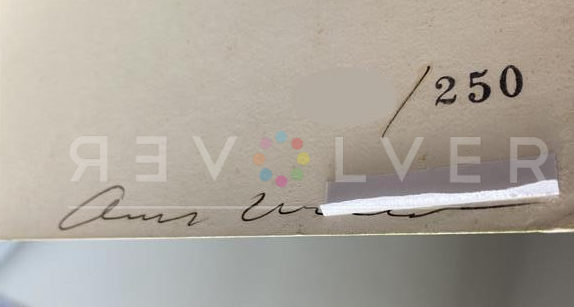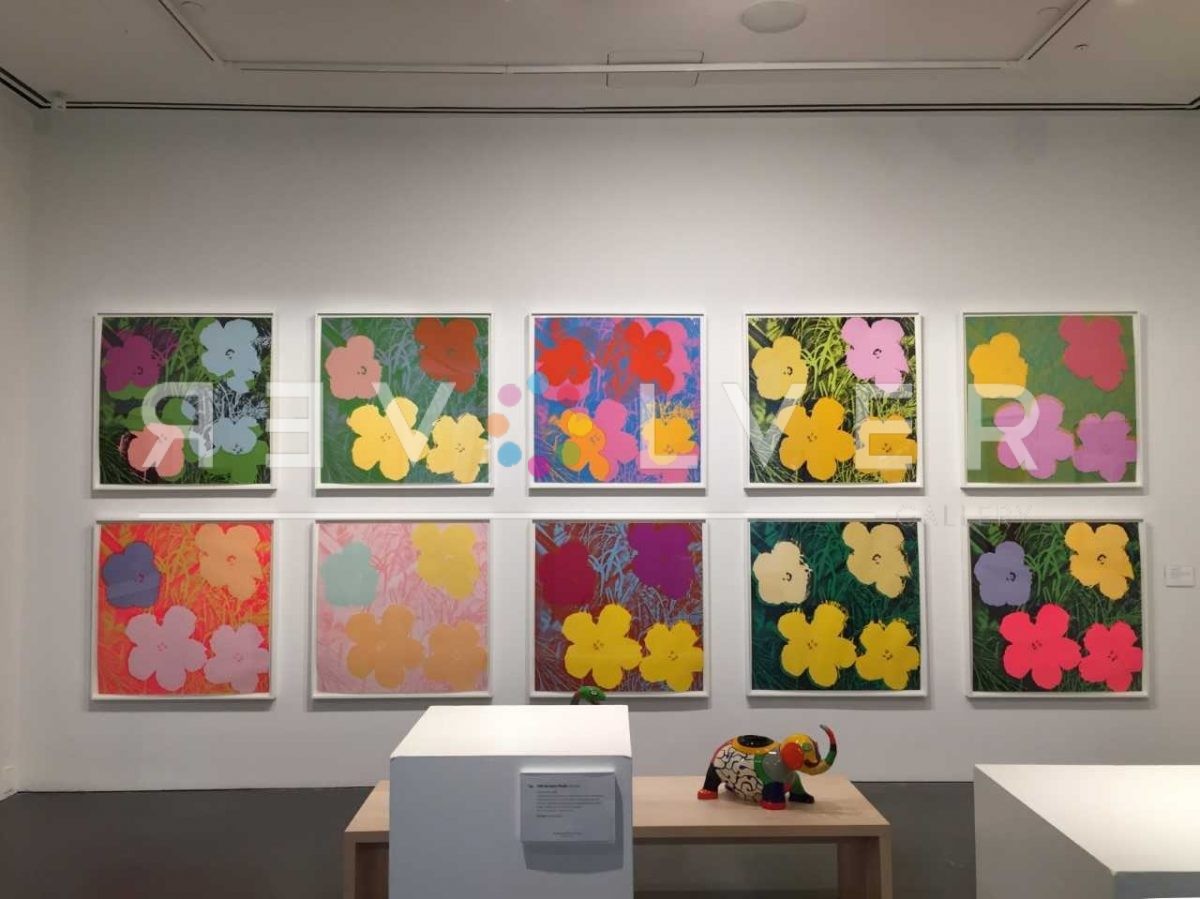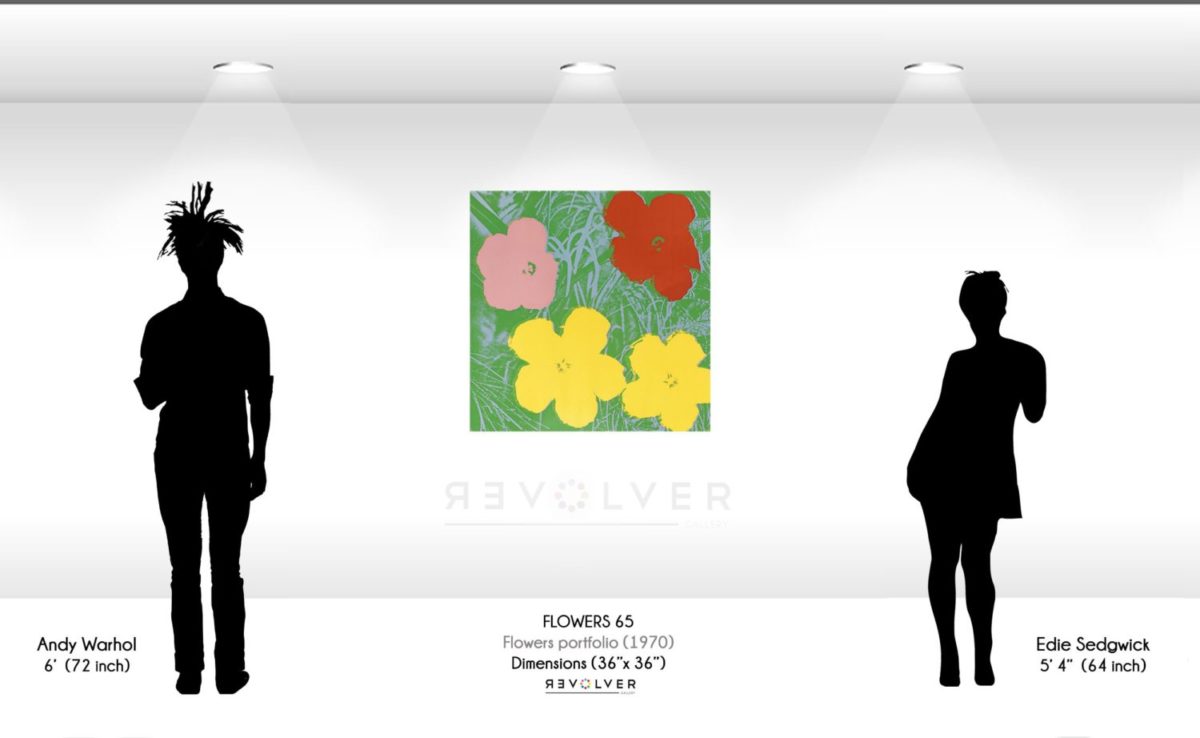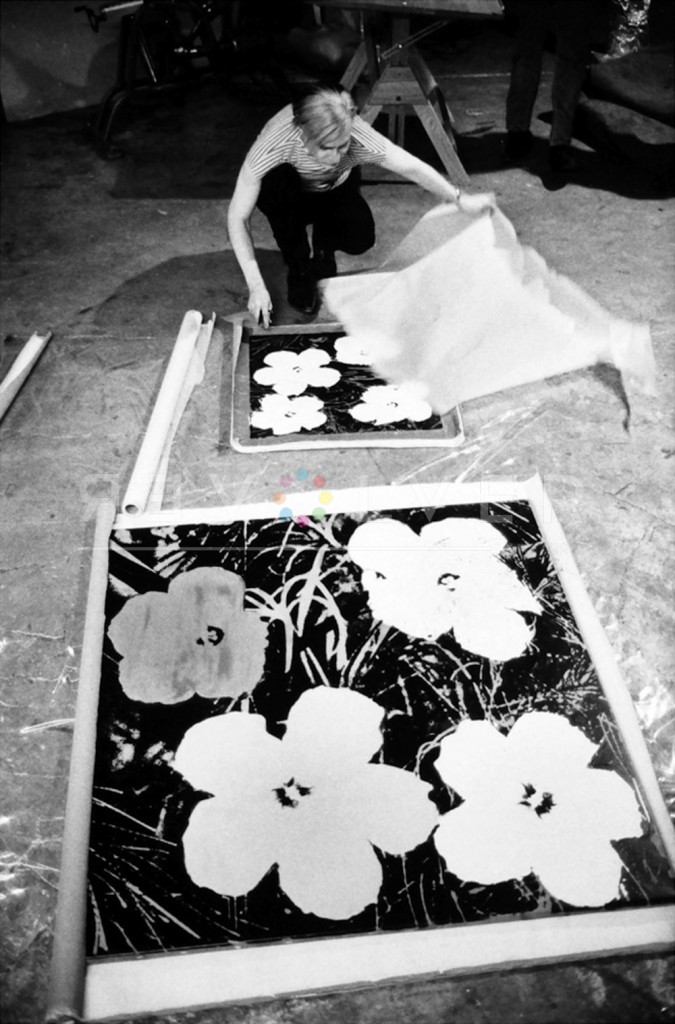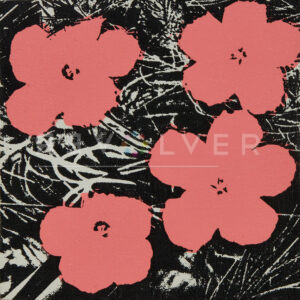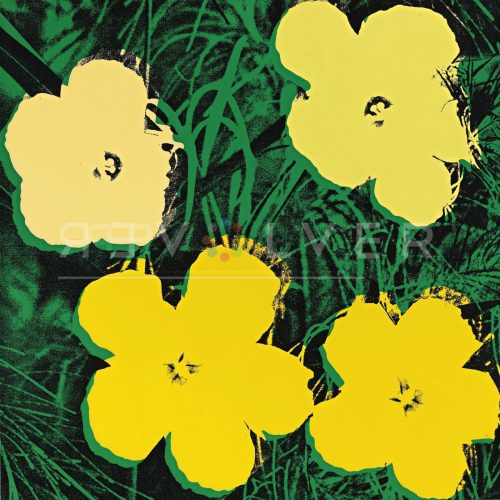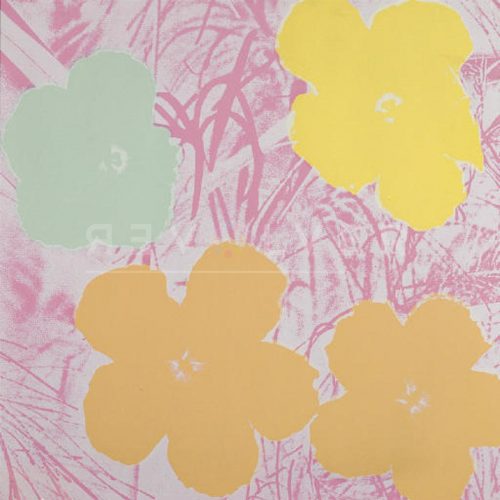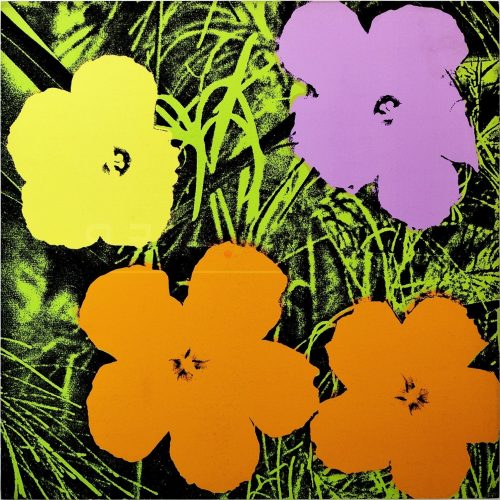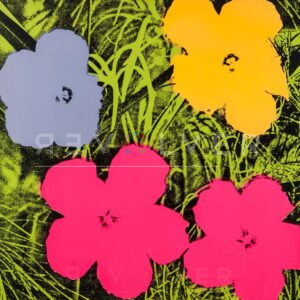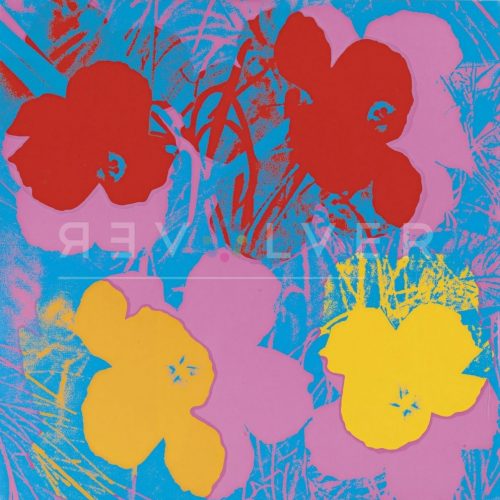Flowers 65 by Andy Warhol is one of ten screenprints from his 1970 Flowers portfolio. Here we see Warhol focusing on a more traditional source of artistic value, taking a break from the subjects in his 1960s work. In this particular print, we see orange, red, and pink flowers, all emerging from the green grass background. This is one of Warhol’s most popular portfolios, and is highly sought after by collectors.
Warhol often found inspiration for his works in advertisements and magazines. The Flowers series is based on a photograph taken by Patricia Caulfield, featuring the hibiscus flowers. Henry Geldzahler, art curator and friend to Warhol, landed on the photo while flipping through a 1964 issue of Modern Photography magazine. He subsequently suggested that Warhol use flowers as a subject. It was a sharp contrast from his ongoing Death and Disaster series, which depicted violent images.
To create Flowers 65, Warhol cropped and then inverted the floral image, allowing one to view Flowers from a variety of different angles. Two years after their original showing in 1964, Caulfield sued Warhol for unauthorized use of her image. Though Warhol offered her two sets of Flowers as payment, she wanted a cash settlement instead. Because of this incident, Warhol became more vigilant about copyright laws. As a result, the lawsuit is largely responsible for pushing Warhol to begin using his own photographs for the basis of his screenprints. We see this in his 1970s work, in portfolios like Mick Jagger, and Skulls.
Andy Warhol loved flowers. “I always notice flowers,” he said in his 1988 book, Andy Warhol’s Party Book. At the time Warhol created these prints, the Flower Power movement was in full throttle. Andy was always in tune with his cultural surroundings. The ubiquitous floral imagery of the time likely made him even more eager to paint Flowers.
As leader of the Pop Art movement, Andy Warhol is remembered for his famous Campbell’s Soup Cans and portraits of celebrities. Flowers 65 is unique when compared to his typical subject matter, because of the delicate and fragile nature of the hibiscus. At the time, this new series was unlike anything he’d ever produced. Warhol’s art always involves a kind of appropriation from the world around him, followed by various alterations of his subjects. Flowers takes a universal symbol of peace and beauty, and alters it into a more representational, almost impressionist form. Similar works of this nature include Grapes (1979) and Sunset (1972).
To create Flowers 65, Warhol made blocks of color to mask and saturate the flowers against a bed of grass emerging behind them. The grass background which stands out against the bright flower petals creates a visually appealing high-contrast image. Each of the prints from this series contained the same composition from Caulfield’s photo. However, one can view the images from different orientations, as they are 36×36 square prints. Warhol flipped some upside down, inverted the photo, and showed them sideways to offer variety beyond the aspect of color. Other works from this psychedelic series include Flowers 66, and Flowers 69.
Almost twenty years after showing Flowers, Warhol revisited the subject to create his Daisy series. Daisy was much more simplified, yet still contains the vibrant composition Warhol is admired for. Although Flowers 65 is a deviation from Warhol’s typical subject matter, it is undeniably Pop, and stands as one of Warhol’s most beloved works.

